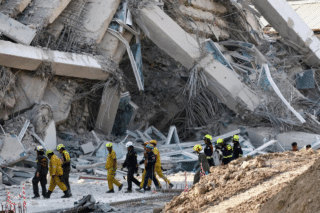With the murder of state witness Alfredo Mendiola, a clear message was sent to the government: The car theft syndicate against which he testified is not one to pull its punches. The state of Mendiola’s corpse and two others (each bound, gagged, and with a bullet wound in the head) and the speed with which he was neutralized (not long after he gave his guards in the Witness Protection Program the slip) indicate that the reach and resources of the syndicate have not waned despite the arrest and incarceration of its leaders. The government should act swiftly to banish the impression that it is operating from a position of weakness.
In fact the government was perceived to be in that precise position of weakness in the wake of the particularly brutal killings in January 2011 attributed to the car theft syndicate led by the brothers Raymond and Roger Dominguez. The killing within days of car dealers Venson Evangelista in one case and Emerson Lozano (and companion Ernani Sensil) in another, the torching of their bodies and theft of their vehicles, stirred public apprehension that authorities were powerless to ensure public safety. It even appeared that no headway could be made in the two cases had not two men surrendered and named the Dominguez brothers as responsible for these and other killings. Mendiola, who confessed to being a member of the syndicate and turned state witness, had apparently completed his direct testimony and cross-examination, meaning his death is not seen to set back the prosecution of the car theft with homicide charges in Evangelista’s case. But while it’s an eminently logical and proactive move, there is something chilling in Interior Secretary Jesse Robredo’s warning that other witnesses should “take all the necessary precautions and seek police protection if necessary.” It’s an acknowledgement of the syndicate’s continuing capability to inflict harm.
Police officials are yet loath to officially say that the car theft syndicate led by the Dominguez brothers is behind the murder of Mendiola and two other men seen as collateral damage. But both Robredo and Justice Secretary Leila de Lima have earlier stated that the syndicate was the most likely suspect—a conclusion that is not farfetched considering the grim body count accompanying its reported carjacking record. And as though to underscore the idea that authorities are not exactly dealing with a paper tiger, Arsenio Evangelista, the father of the murdered young man, has wondered aloud about Robredo’s reference last year to a list of officials in the Philippine National Police and in the Land Transportation Office linked to car theft, and called on him to revisit it.
The involvement of law enforcers and other “public servants” in high crime is neither a novel nor radical idea in these parts. Syndicates engaged in car theft, drug dealing, kidnapping for ransom, even that hardy never-say-die “jueteng,” are known to flourish and endure because of the patronage and protection of people who matter in the general scheme of things. The Dominguez brothers’ syndicate purportedly operates in the provinces of Pampanga and Bulacan and parts of Metro Manila; its leaders may have been decommissioned, so to speak, but the hit on Mendiola proves that its “remnants” are in fine fettle—and continue to enjoy protection. Mendiola himself, in his last days alive, was reported to have observed that the Dominguez syndicate’s “protectors in uniform” were again in action. His movements appear to have been so efficiently monitored by his enemies that his second excursion beyond the confines of the Witness Protection Program proved to be his last. Who served as eyes and ears in that streamlined operation?
The murder of Mendiola not only caught the government with its pants down, again, but also brought to the fore the necessity of beefing up the program established to protect witnesses and whistle-blowers. Are all of them dead men walking? Robredo and De Lima are faced with the task of overhauling and strengthening this key program that is critical to the resolution of many a case of long standing. It will not do to merely yield to a witness who chafes at confinement and tries to elude his guards at every opportunity. As Mendiola’s unfortunate end shows, it’s not only the case that has to be saved, but the witness’ very life as well.



